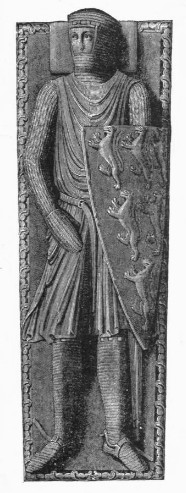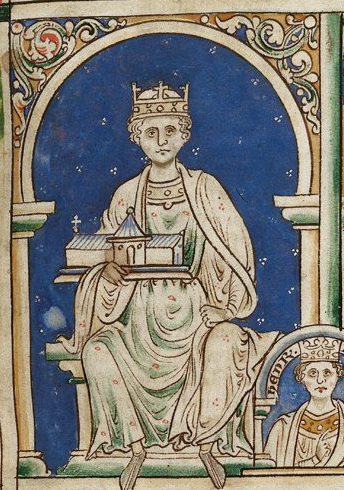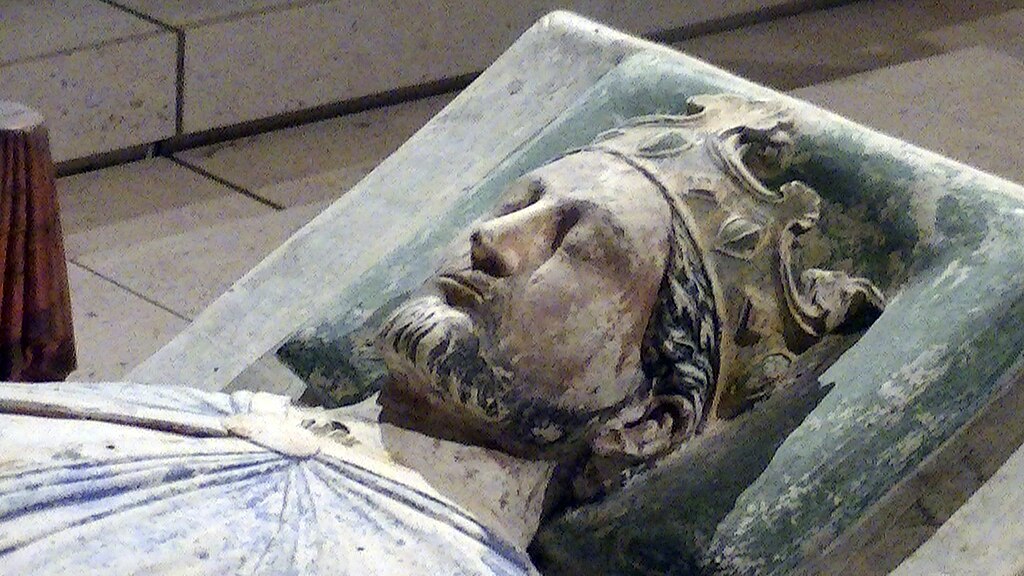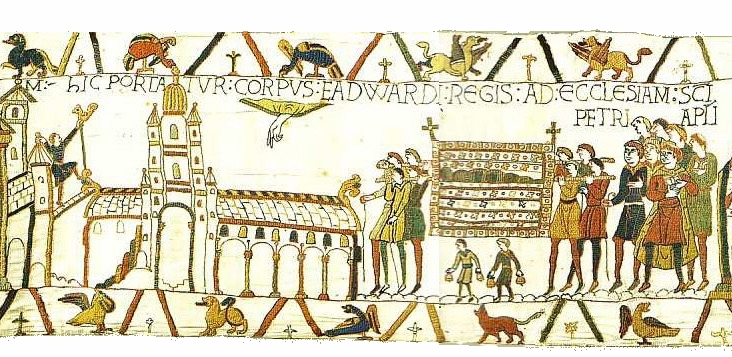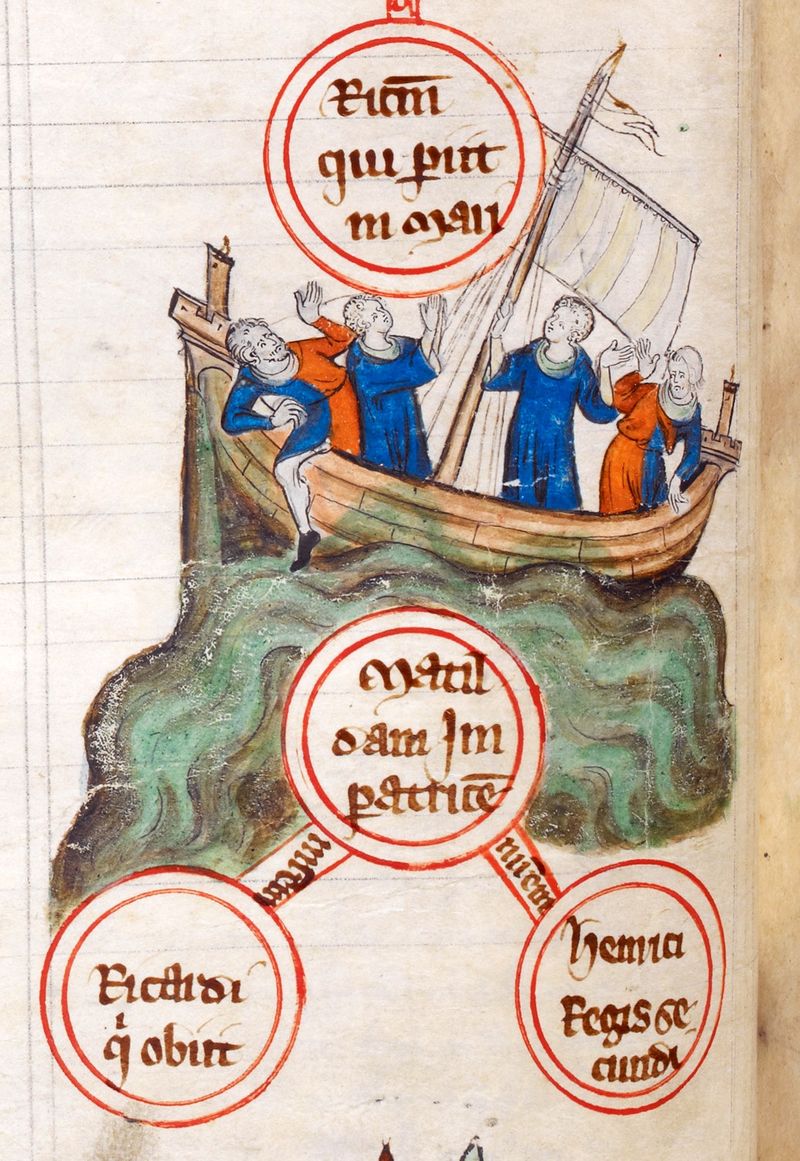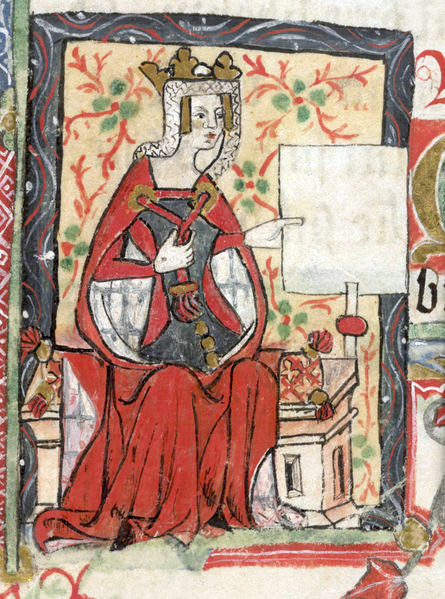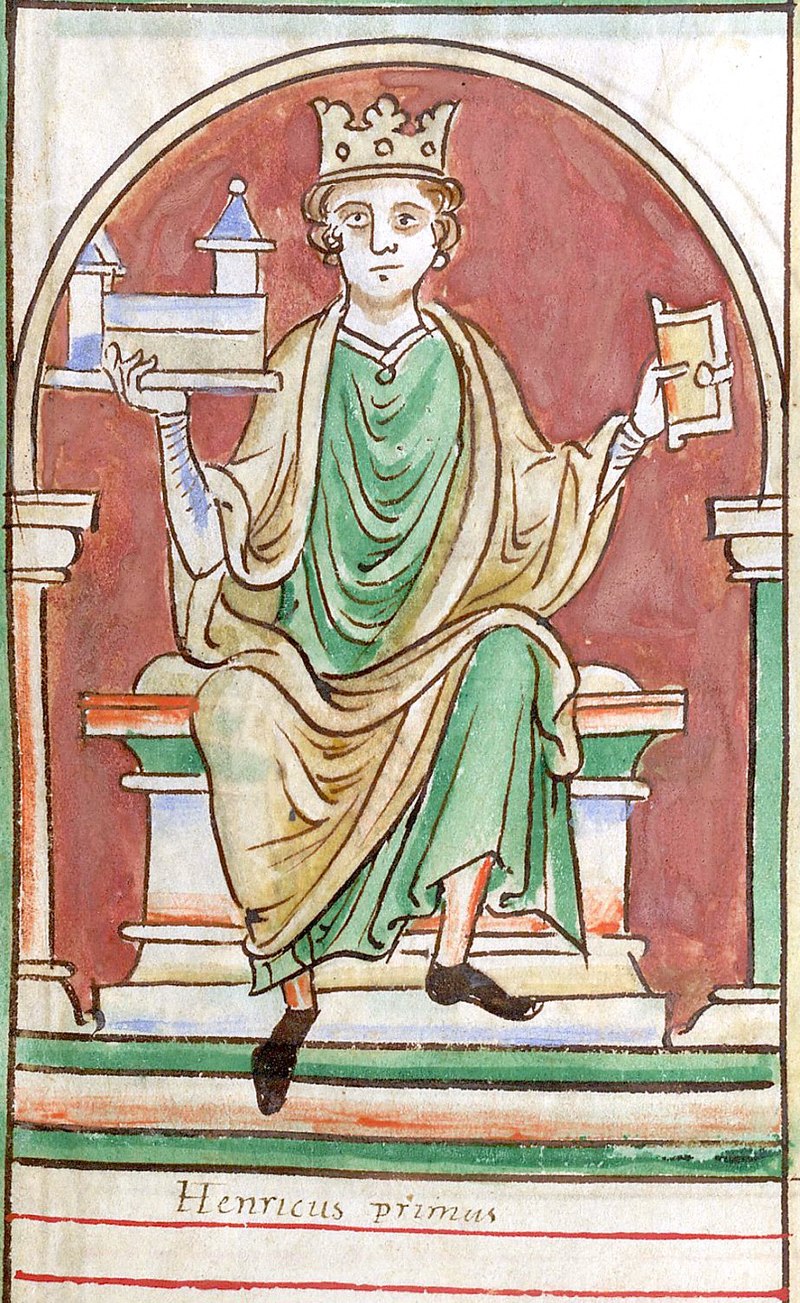by Susan Flantzer
© Unofficial Royalty 2024

Arthur Plantagenet (on the right with red hat), detail from the procession of Garter Knights in the Black Book of the Garter, circa 1535, Royal Collection, Windsor Castle; Credit – Wikipedia
At the risk of being beheaded during the reign of his nephew King Henry VIII of England, Arthur Plantagenet, 1st Viscount Lisle was born sometime between 1461 and 1475 in Calais, then an English possession in France. He was the illegitimate son of King Edward IV of England and probably Elizabeth Lucy, also known as Elizabeth Wayte. She may have been the daughter of Thomas Wayte of Hampshire but it is unclear if Elizabeth Wayte and Elizabeth Lucy are the same person.
It is probable that an illegitimate daughter of King Edward IV was Arthur’s full sister:
- Elizabeth Plantagenet (circa 1464 – ?), married Sir Thomas Lumley, had six children
Arthur had ten royal half-siblings from his father’s marriage to Elizabeth Woodville:
- Elizabeth of York (1466 – 1503), married King Henry VII of England, had seven children including Margaret Tudor, Queen of Scots, King Henry VIII of England, and Mary Tudor, Queen of France
- Mary of York (1467 – 1482), unmarried
- Cecily of York (1469 – 1507); married (1) Ralph Scrope of Upsall, no issue, marriage annulled; (2) John Welles, 1st Viscount Welles, had two daughters who died young; (3) Sir Thomas Kyme, possible issue
- King Edward V of England (1470 – c. 1483); briefly succeeded his father, as King Edward V of England, was the elder of the Princes in the Tower
- Margaret of York (born and died 1472)
- Richard of Shrewsbury, 1st Duke of York (1473 – c. 1483), was the younger of the Princes in the Tower
- Anne of York (1475 – 1511); married Thomas Howard (later 3rd Duke of Norfolk and uncle of Anne Boleyn and Catherine Howard, King Henry VIII’s beheaded wives), had four children who died in childhood
- George Plantagenet, 1st Duke of Bedford (1477 – 1479)
- Catherine of York (1479 – 1527); married William Courtenay, 1st Earl of Devon, had three children
- Bridget of York (1480 – 1517); became a nun
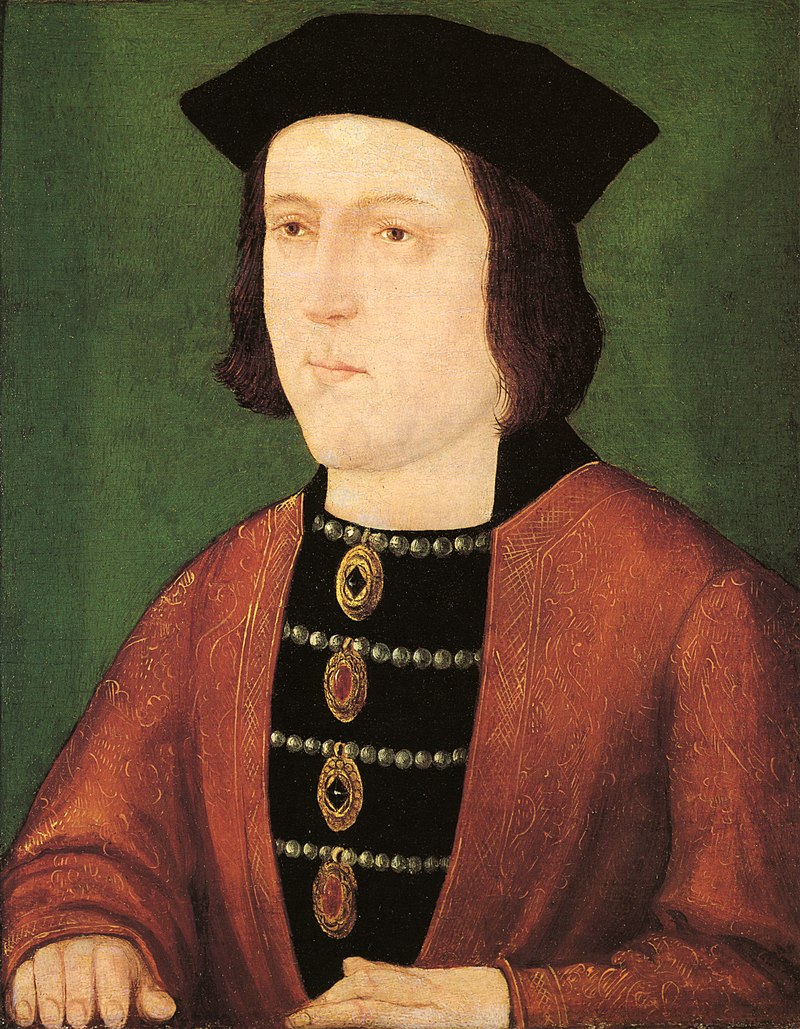
Arthur’s father King Edward IV of England; Credit – Wikipedia
Arthur grew up at the court of his father King Edward IV who died in 1483, but there is no information about his childhood. In 1501, Arthur was first mentioned in records as a member of the household of his half-sister Elizabeth of York, the wife of King Henry VII and the mother of King Henry VIII. After Elizabeth of York’s death in 1503, Arthur became a member of King Henry VII’s household. When Arthur’s nephew King Henry VIII succeeded his father as King Henry VIII in 1509, Arthur officially became an Esquire of the Body, the personal attendant to the King.
On November 12, 1511, Arthur married Elizabeth Grey, 6th Baroness Lisle, daughter of Sir Edward Grey and Elizabeth Talbot, 3rd Baroness Lisle. Elizabeth had been first married to Edmund Dudley, treasurer to King Henry VII, who was executed in 1510 by King Henry VIII. Elizabeth’s son from her first marriage was John Dudley, 1st Duke of Northumberland who led the government of King Henry VIII’s young son King Edward VI from 1550 – 1553 and unsuccessfully tried to install Lady Jane Grey, the wife of his son Lord Guildford Dudley, on the English throne after the death of Lady Jane’s first cousin King Edward VI. John Dudley, 1st Duke of Northumberland, Lord Guildford Dudley, and Lady Jane Grey were all executed.
Arthur and Elizabeth had three daughters:
- Lady Bridget Plantagenet (1513 – 1558), married William Carden, no children
- Lady Elizabeth Plantagenet (1516 – 1558), married Sir Francis Jobson, Member of Parliament for Colchester, had three sons and one daughter
- Lady Frances Plantagenet (1519 – 1558), married (1) Sir John Basset of Umberleigh, had three sons (2) Thomas Monke of Potheridge, had three sons and three daughters
Arthur’s first wife Elizabeth died in 1529 and in the same year, he married Honor Grenville, the daughter of Sir Thomas Grenville of Stowe and Isabella Gilbert. Honor was the widow of Sir John Bassett of Umberleigh. Arthur and Honor had no children but together they raised Arthur’s three children from his first marriage and Honor’s seven children from her first marriage including Sir John Basset of Umberleigh who became the husband of Arthur’s daughter Frances.
Arthur continued to receive royal favor during the reign of his nephew King Henry VIII:
- 1513: Knighted
- 1513: Appointed High Sheriff of Hampshire
- 1520: Attended his nephew King Henry VIII at the Field of Cloth of Gold
- 1523: Created Viscount Lisle
- 1524: Invested as a Knight of the Garter
- 1525: Appointed Vice-Admiral of England
- 1533: Appointed Lord Deputy of Calais and Privy Councilor
- 1536: Appointed Lord Warden of the Cinque Ports
- 1540: Appointed a Privy Councillor
After the birth in 1537 of his only son, the future King Edward VI, King Henry VIII focused on obtaining for his son a clear path to the succession to the throne in any way he could. One way was eliminating Plantagenet relatives who could claim the throne. Among those executed were:
- Henry Courtenay, 1st Marquess of Exeter (Henry VIII’s first cousin, the son of Princess Catherine of York, the sixth daughter of King Edward IV) – beheaded in 1538
- Henry Pole, 1st Baron Montagu (Henry VIII’s second cousin, the son of Margaret Pole, 8th Countess of Salisbury (see link below) and the grandson of George Plantagenet, 1st Duke of Clarence who was the brother of King Edward IV) – beheaded in 1539
- Margaret Pole, 8th Countess of Salisbury (Henry VIII’s first cousin once removed, the daughter of George Plantangenet, Duke of Clarence who was the brother of King Edward IV) – beheaded in 1541
King Henry VIII also saw his illegitimate uncle Arthur Plantagenet, 1st Viscount Lisle as a possible claimant to the throne. On May 19, 1540, Arthur was suddenly arrested for his alleged part in the Botolph Plot. Sir Gregory Botolph was one of Arthur’s three chaplains. It was suspected that Botolph was involved in a conspiracy to hand over Calais, a territory in northern France ruled by England from 1347 to 1558, to France or at least to Cardinal Reginald Pole, the son of Margaret Pole, 8th Countess of Salisbury. Some historians think this conspiracy was a ruse concocted by Thomas Cromwell, King Henry VIII’s chief minister.
Arthur was recalled from Calais to London, and the reason given was that he was to be created an earl. All seemed well. He attended the House of Lords and Garter Day. Then, on May 19, 1540, Arthur was “accused of secret intelligence with Cardinal Reginald Pole” and “certain practices to deliver the town of Calais to Pole,” and imprisoned in the Tower of London. His wife Honor and the two children who were still at home were placed under house arrest in Calais, the household was dissolved, and Arthur’s correspondence was taken to London for investigation. Eventually, Arthur’s son-in-law John Basset was able to bring Honor and the children to live with him in London.

The Chapel Royal of St. Peter ad Vincula at the Tower of London where Arthur is buried; Credit – Von Samuel Taylor Geer – Eigenes Werk, CC BY-SA 4.0, https://commons.wikimedia.org/w/index.php?curid=36712795,
Arthur was confined in the Tower of England for two years until his innocence was proven, or perhaps until King Henry VIII had second thoughts about the so-called conspiracy. As a sign of Arthur’s restored favor, King Henry VIII had his trusted courtier Thomas Wriothesley, 1st Earl of Southampton deliver to Arthur a diamond ring along with a message that he would be released. Sadly, Arthur Plantagenet died of a heart attack the following night, March 3, 1542, in the Tower of London, supposedly out of joy at the news of his release. He was buried in the Chapel Royal of St. Peter ad Vincula at the Tower of London in London, England.
This article is the intellectual property of Unofficial Royalty and is NOT TO BE COPIED, EDITED, OR POSTED IN ANY FORM ON ANOTHER WEBSITE under any circumstances. It is permissible to use a link that directs to Unofficial Royalty.
Works Cited
- Arthur Plantagenet, 1st Viscount Lisle. geni_family_tree. (2022a, April 26). https://www.geni.com/people/Arthur-Plantagenet-1st-Viscount-Lisle/6000000001544505919
- Beauclerk-Dewar, Peter & Powell, Roger. (2006). Right Royal Bastards – The Fruits of Passion. Burke’s Peerage & Gentry LLC.
- Williamson, David. (1996). Brewer’s British Royalty. Cassell.
- Wikimedia Foundation. (2023, June 20). Arthur Plantagenet, 1. Viscount Lisle. Wikipedia (German). https://de.wikipedia.org/wiki/Arthur_Plantagenet,_1._Viscount_Lisle
- Wikimedia Foundation. (2023). Arthur Plantagenet, 1st Viscount Lisle. Wikipedia. https://en.wikipedia.org/wiki/Arthur_Plantagenet,_1st_Viscount_Lisle









